02 Mar Gape Darts for Necklines and Armholes
Last Saturday we swapped our regular #PatternPuzzle for some #PatternFundamentals. The focus of the conversation was GAPE DARTS and how to use them in your pattern making to get a better result in your first toile of new designs. You may know them as contouring darts.
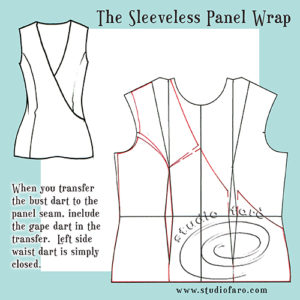
The first question for fans was do you know what a gape dart is?
And do you know when to use them?
Gape darts are most often used to tighten necklines and sleeveless armholes. When you decide not to use the sleeve in your block or pattern, it will be the gape darting that achieves the neat fit of the armhole. When you cut a deep or wide neckline it will be the gape darts that bring the neckline closer to the body. Gape darts are essential for a successful sleeveless garment, wide or deep necklines, wrap styles and cut-outs.
Gape Darts are rarely mentioned in pattern making instructions. And they will always be needed in the pattern making changes you make to your fitted block. And until you understand gape darts they will drive you crazy. Those gaping armholes and saggy necklines we are here to banish them.

Following are a couple of examples:
The Sleeveless V Neck &
A Sleeveless Panel Wrap
The Sleeveless V Neck
The pattern plan below is an example of a sleeveless style with a ‘V’ neck. Gape darts are needed in this style in the neckline (1cm/3/8″) and the armhole (1cm/3/8″) to achieve a clean, close fit. Width reduction in the underarm (-1cm /3/8″), along the side seam will remove the extra fabric required when including a sleeve. These three reductions in the armhole, neckline and side seam can be applied to nearly all similar styles. The measurements suggested in this paragraph are approximate only but represent a good start in developing these style.
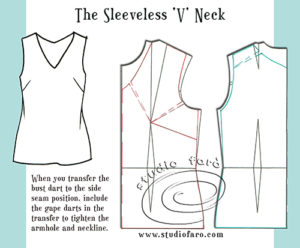
Cut through the new dart position to the bust point. then fold closed the bust dart and both gape darts. Add paper behind the new dart space and fold out to get the correct shape on the outside edge. Close the gape dart on the back bodice, pivoting on the armhole edge. Clean up the curves in the neckline and armholes before adding seam allowances.
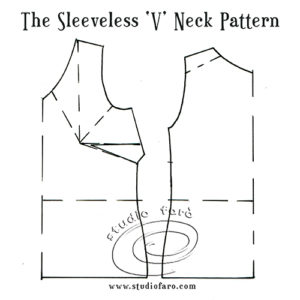
A Sleeveless Panel Wrap
The pattern plan below is a good example of dealing with any long diagonal line in the bodice. In this case the asymmetric wrap in this panelled bodice has a neckline gape dart near the bust dart and further reduction of the line on the left side waist dart. The armhole gape dart is built into the panel seam. And the side seam at the underarm has the same treatment as above.

To make the pattern below transfer the bust and gape darts into the panel seam and simply close the left side waist dart as much as you can. Longer lines tend to need twice as much gape darting as a regular neckline.
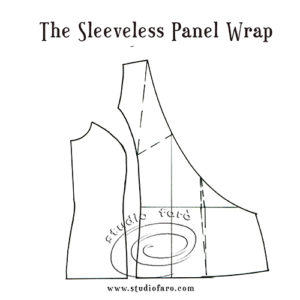
Let me know if you have any questions about gape darts or any other fitting issues with your toile.
Enjoy 🙂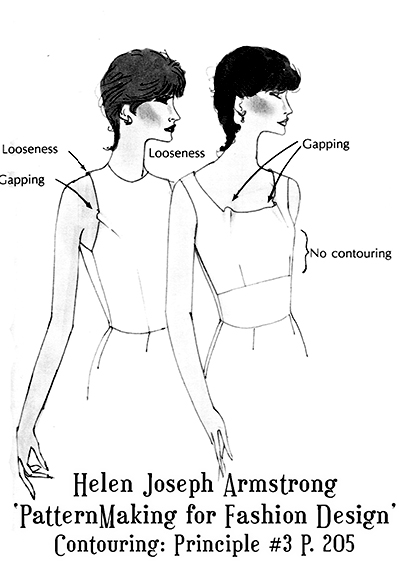
Enjoy 🙂

A text book reference for gape darts from Helen Joseph Armstrong. This is a great pattern making book for anyone learning to cut patterns. Thanks to everyone for pointing the way to yet more resources for making better patterns.
Enjoy 🙂
Take this moment to sign up for my fabulous newsletter! Every month or so I send an email newsletter with new website content and always, always an enormous discount code for all my sewing patterns, garment blocks and pattern making instructions.
This discount code is for subscribers only. Don't miss out!


No Comments